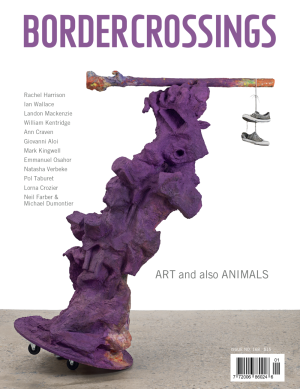Caught Between Two Worlds
I have been a fan of Salman Rushdie’s writing since 1981 when I picked up Midnight’s Children shortly after it was published. It is a wonderful novel, documenting the origins of a nation: India, 1947. With imagination, wit and, above all, scope, it colours in the canvas of India’s birth and early growth, drawing parallels between the nation’s evolution and that of a child born at the same time. I read, too, Shame and Grimus, the two novels that followed, but it was not until The Satanic Verses that I heard again the voice that had initially enthralled me—the voice of the chronicler of a people: urbane, clever, insightful and daring.
East, West, Rushdie’s second collection of stories, is some of these things; certainly a book for his fans to read, but to my taste the mix is not quite right. The problem is this: Rushdie’s power as a writer rests on the tremendous reach of his imagination, his ability to layer plot and in the same breath catalogue social injustice. He is able to leap through the space/time continuum while simultaneously turning character inside out, like a windsock suddenly measuring a radical shift in air currents. As a genre the novel is perfectly suited to this expansive genius, but the short story doesn’t offer equivalent scope. As a consequence, coming to this collection knowing Rushdie’s great novels is somewhat akin to viewing miniatures of Guernica: the ideas are there but the work lacks a certain sweep of mind.
East, West deals with India and England, the two worlds the author knows best, and the tensions between them and their inhabitants, particularly those, like Rushdie himself, who move back and forth between the former motherland and its colony. The book is divided into three parts to enforce the idea: “East” then “West” and finally “East, West.” Each section is comprised of three narratives.
The stories in “East” are the most conventional. In “Good Advice is Rarer than Rubies,” for example, a young Indian woman, desperate to join her intended husband in England, learns the meaning of “home,” turns her back on the glittering English world and returns to her native village, a wiser and happier person. “The Free Radio” tells the sad story of a young rickshaw driver who allows himself to be sterilized by the health authorities in the mistaken belief that he will receive a transistor radio in return. While he is awaiting its delivery, he keeps face with his friends and neighbours by pantomiming the radio at his ear and calling out “All-India Radio.” When he learns he has been gulled by his own fantasies, he flees to another city, from where he sends letters telling of his great successes. They are lies, of course, and the sad narrator of this story closes his tale with a sentiment that might have fit into a 19th-century story:
They were wonderful letters, brimming with confidence, but whenever I read them, and sometimes I read them still, I remember the expression which came over his face in the days just before he learned the truth about his radio, and the huge mad energy which he had poured into the act of conjuring reality, by an act of magnificent faith, out of the hot thin air between his cupped hand and his ear.
The stories in the section called “West” are the most experimental, playing with the conventions of narrative and the idea of story-making. “At the Auction of the Ruby Slippers,” for instance, transforms the famous footwear of Dorothy in The Wizard of Oz, into a hotly desired cult object. In “Yorick,” the characters of Shakespeare’s Hamlet are turned topsy-turvey in a display of wit and ingenuity: Ophelia is the wife of a jester and Hamlet convinces the fool that she is having it off with Claudius, who, in turn, has his head off for the inference. It makes quite a tale, but its twists and turns, its jokes and sillinesses also suggest that Rushdie, reading about his mastery at narrative tomfoolery, is straining. As another Shakespeare persona once said, there are times when “a little more than a little is by much too much.”
The three pieces in “East, West” dramatize the tensions between the two great cultures that Rushdie writes about in all his fiction. “The Harmony of the Spheres” is a story about the efforts one Anglo-Indian makes in coming to terms with those tensions. He becomes a follower of an Englishman who dabbles in the occult, confessing that in his pursuit of what he calls forbidden knowledge he hopes to find “a bridge between here-and-there, between my two othernesses, my double unbelonging.” He fails, just as do the characters in the final story of the collection, “The Courter”; not because they don’t wish to succeed or try hard enough, but because it’s inevitable. Near the conclusion of the tale Rushdie seems to step out from behind the narrative curtain and speak in his own voice. “I, too, have ropes around my neck,” says the narrator, “I have them to this day, pulling me this way and that, East and West, the nooses tightening, commanding, choose, choose.” That’s a telling summation for a person who’s walked the path Salman Rushdie has in the past decade. ♦
East, West, Stories by Salman Rushdie Toronto: Alfred A. Knopf Canada, 1994 Softcover, 214 pp., $19 .00
Wayne Tefs is a Contributing Editor to Border Crossings and a novelist.

